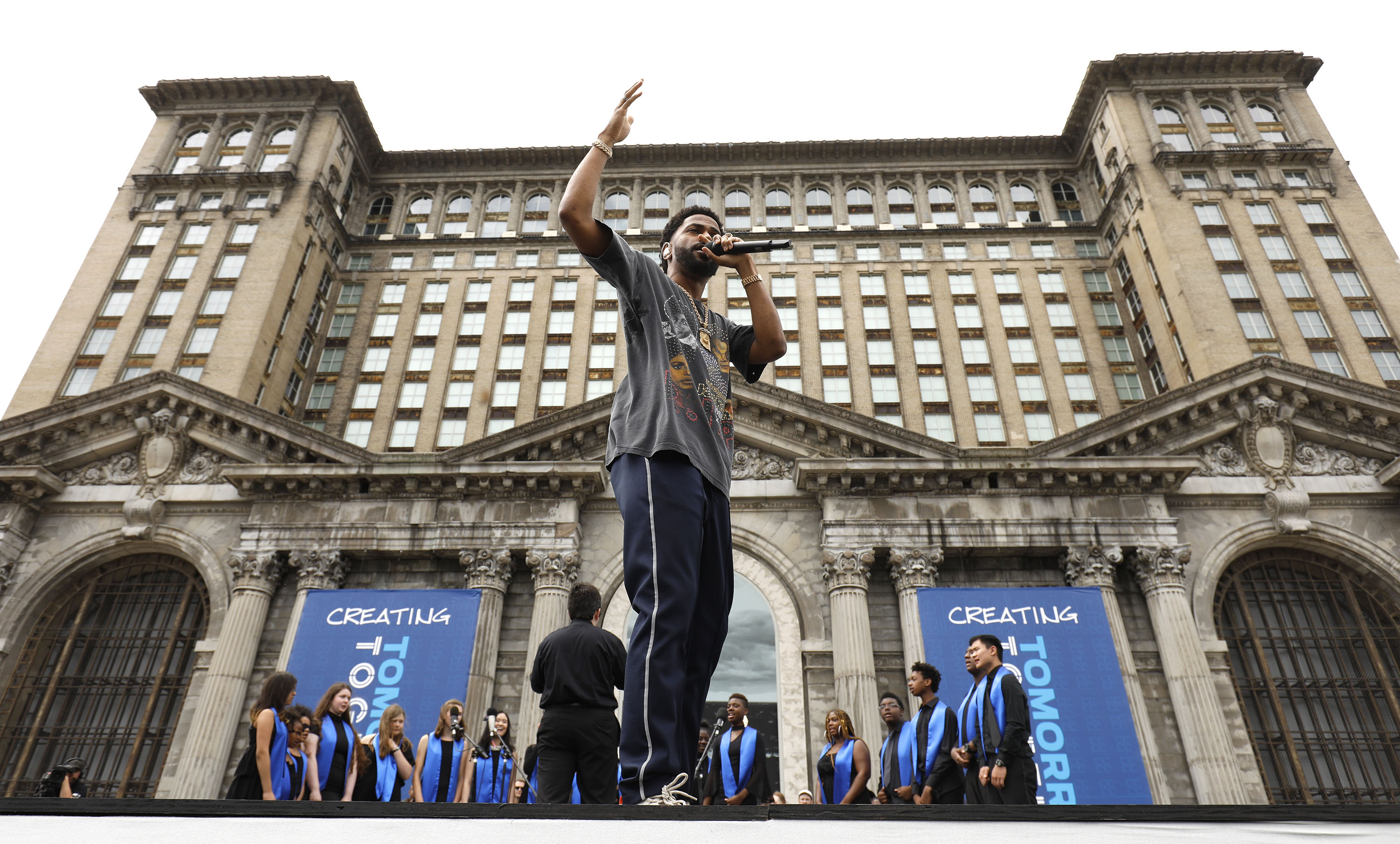Ford bets its future on new Detroit hub
Photo: () | ©AFP
Chicago (AFP) – Bill Ford Jr., the great-grandson of the American carmaker’s founder, stood in front of thousands Tuesday in Detroit, with an abandoned train station in the background, and entwined the company’s future with that of the dilapidated building behind him.
“This station is a symbol,” Ford declared. “We’re making a big bet on our future.”
The company — one of America’s “Big Three” automakers — bought the Michigan Central Station building, a Beaux Arts gem opened in 1913 that has stood abandoned and decaying for three decades, to make it the centerpiece of a new urban high-tech campus.
The once proud building has faded, but is poised for much the same renewal that Detroit residents and businesses hope will mark the Motor City’s post-recession, post-bankruptcy renaissance.
At an event, the Ford Motor Company unveiled its lofty plans: a space of 1.2 million square feet (111,500 square meters) spanning several city blocks, where the company’s employees, and those of partner firms and startups, will work on innovations such as autonomous driving and electrification.
“Just as Detroit has had to reimagine what it’s going to be, we have to do the same, because everything is changing,” Ford said.
– Courting millennials –
Ford hopes to open the redeveloped train station in three to four years and make it a “magnet for high-tech talent,” according to a company statement.
Part of the company’s gamble is that, by moving its innovations divisions into Detroit’s urban core, Ford can attract the technology-savvy millennials it needs. The company’s main headquarters will remain in nearby suburban Dearborn.
“We want the best startups, the smartest talent, the kind of thinkers, engineers and problem-solvers who see things differently, to come and partner with us here in Detroit,” Ford said.
The venerable American brand is facing the same challenge as other carmakers, which is basically an image problem, said Michigan State University marketing and communications professor Robert Kolt.
“I’ve never heard a student say, ‘Well, I want to work for a car company.’ They just don’t say it,” Kolt told AFP.
“If you want to attract young people, you build a Silicon Valley-type of headquarters.”
The train station project is a matter of survival for Ford, which has fallen behind its Detroit rivals GM and Fiat Chrysler (FCA) in developing self-driving cars.
GM plans to mass-produce autonomous cars by 2019, and FCA has an expanding partnership with Google parent Alphabet’s Waymo autonomous car division.
But Ford won’t have an autonomous car for consumers until 2021 — a full two years after GM.
Building a high-tech nerve center can help the company down the road, said industry analyst David Whiston of Morningstar. He sees promise in initiatives such as Ford’s Silicon Valley research facility.
“In the past couple of years, they’ve done all sorts of things showing that they’re making the right investments,” Whiston told AFP. “They just need the time.”
– Automakers evolving –
In some ways, Ford is actually ahead of many other car companies that realize they must evolve, but have not figured out how, said London-based analyst Philippe Houchois of Jefferies.
“To develop new mobility services and a new relationship with customers, they feel their traditional staff is not the right structure,” Houchois told AFP.
Carmakers need more coders, scientists and researchers.
They also need young, urban dwellers, who understand the needs of an increasingly-urbanized customer base that will require more car-sharing and delivery via autonomous fleets.
“The industry needs to balance being a manufacturer and service provider,” Houchois said.
“Autos as product and as an industry will probably change more in the next 10, 15 years, than they have in the previous 50 or 60.”
Disclaimer: This story has not been edited by Siliconeer and is published from a syndicated feed. Siliconeer does not assume any liability for the above story. Validity of the above story is for 7 Days from original date of publishing. Content copyright AFP.


